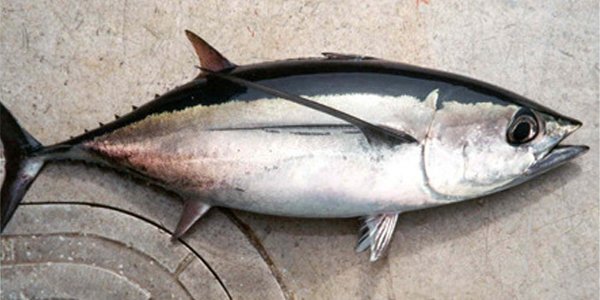Longfin Tuna price

Where to buy and sell Longfin Tuna, lowest (cheapest) and highest price.
check offers buy sell Longfin TunaToday price for Longfin TunaLongfin Tuna
Albacore tuna is a type of tuna found in the Pacific and Indian Oceans. It is also known as longfin tuna. The albacore fish is considered to be one of the best tasting fish. It has a light pink flesh with a slightly sweet flavor. Albacore tuna is a good source of protein and omega-3 fatty acids. It is also low in mercury. Albacore tuna is often caught using pole and line methods. This type of fishing is considered to be more sustainable than other methods such as longline fishing. Albacore tuna can be found in canned form, as well as fresh and frozen. When buying canned tuna, look for brands that use pole and line methods of fishing. Albacore tuna are one of the larger tuna species and can weigh up to 100 pounds. They are found in tropical and temperate waters around the world and are a popular game fish. Albacore tuna have a long, slender body with a long fin on their back. Their body is blue-green above and silver below, with dark vertical stripes on their sides. Albacore tuna are fast swimmers and can reach speeds of up to 50 miles per hour. They are predators, feeding on smaller fish, squid, and crustaceans.Albacore tuna are commercially fished for their meat, which is canned and sold as "white tuna." They are also a popular target for sport fishermen. Albacore tuna are managed by international agreements because of their high value and Because they are migratory fish, albacore tuna are not found in any one place all year round. Instead, they migrate across the oceans following the movements of their prey. This makes them difficult to manage and has led to overfishing in some areas. As a result of overfishing, the population of albacore tuna has declined in recent years. In order to protect these fish, international agreements have been put in place to limit the amount of albacore tuna that can be caught each year. These agreements have helped to reduce the amount of albacore tuna being caught, but the population is still in decline. Albacore tuna are an important part of the ocean ecosystem and their decline could have serious consequences for the health of the oceans. Albacore tuna are a valuable commercial fish species and are also popular with sport fishermen. The population of albacore tuna has declined in recent years due to overfishing. International agreements have been put in place to limit the amount of albacore tuna that can be caught each year. Albacore tuna play an important role in the ocean ecosystem and their decline could have serious consequences for the health of the oceans.Global longfin Tuna production
Global production of longfin tuna has been on the rise in recent years, reaching a record high of nearly 890,000 tonnes in 2016. This increase is largely due to improved fisheries management and greater investment in tuna aquaculture. As a result of these efforts, longfin tuna are now being harvested from more sustainable stocks and are being farmed using more environmentally-friendly methods. This has led to a significant increase in longfin tuna production, making it one of the most important fish species in the world today. The vast majority of longfin tuna are caught in the open ocean, with smaller amounts coming from coastal fisheries. The main fishing grounds for longfin tuna are in the western and central Pacific Ocean, although the species is also found in the Indian Ocean and off the coast of South America. Longfin tuna are highly migratory fish, swimming long distances between feeding and breeding grounds. This makes them difficult to track and manage, which has led to overfishing in some areas. However, recent efforts to improve fisheries management are starting to pay off, with longfin tuna stocks beginning to recover in some parts of the world. With proper management, longfin tuna can continue to be a valuable resource for people all over the world.Download our new
Husfarm App
Stay up to date with the current prieces of agricultural products all over the world.
Do you want to sell agricultural products?
Are you an Agricultural processor looking for high-quality products to buy?
Post an ad for FREE!
